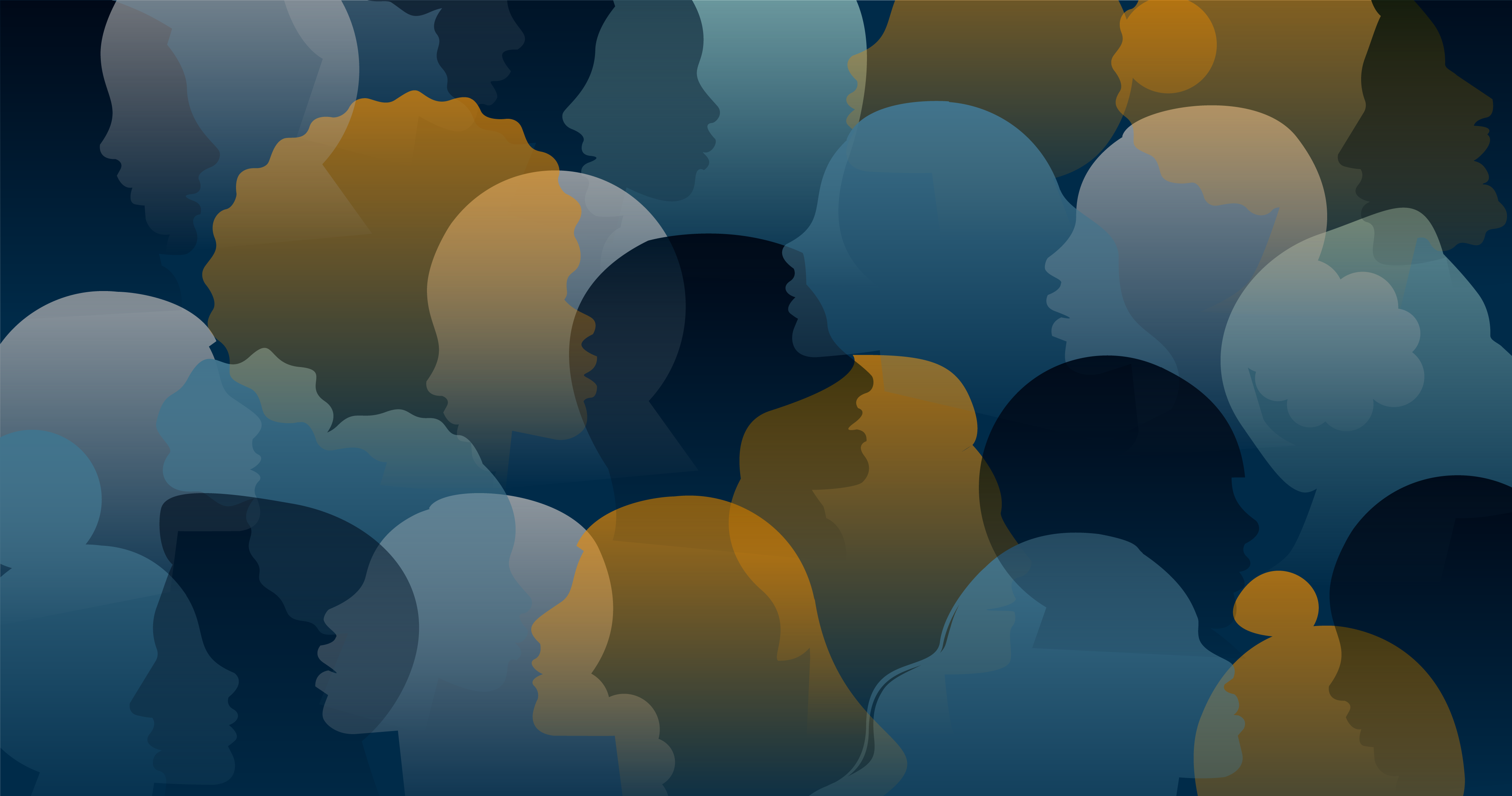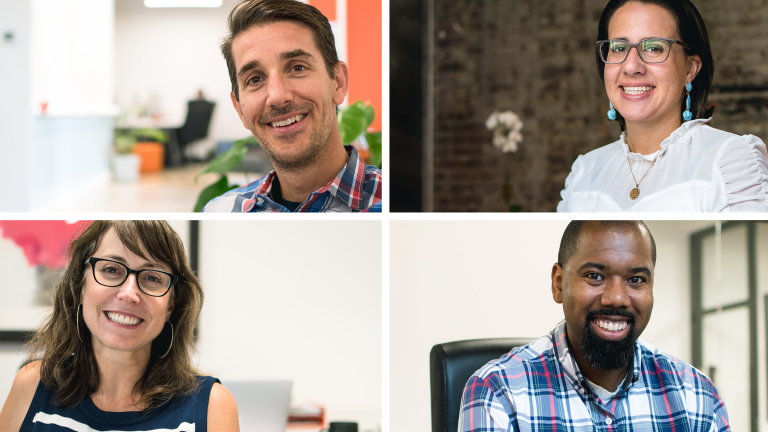A roundtable discussion about DEI – part two


- Author: Ingenuity Design
In the second half of this two-part roundtable discussion, we’re talking with Meghan Stewart, Managing Partner, Greg Stewart, Founder and Executive Creative Director, Katie McFate, Director of Project Management, and Brandon Smith, Account Executive about diversity, equity, and inclusion, what it means for our clients and our work, and what it means for Ingenuity itself.
Missed part one of our diversity, equity, and inclusion discussion? Read it here.

In Part One we talked about Ingenuity’s commitment to openness, communication, bettering yourself, and education. Continuing with those themes for our diversity, equity, and inclusion discussion, how are you planning on diversifying your professional networks?
Meghan: I recognize there’s a lot of opportunity to improve in that area. As I was reflecting on who I am connected to from my previous and current work and what groups I am part of, I realized I haven’t been as involved with the groups I am already part of as much as I should. My dual aim is to be more purposeful in finding the right groups that will provide a greater representation and then also get more involved. I have to be more purposeful in where I spend my time.
Greg: I agree. I have a really strong network, but I don’t listen enough or read enough. I need to pay attention to what others are saying and chime in and be part of conversations. One of my greatest goals is to listen more and engage in new and different conversations.
Katie: Fairfield County marketing is a small world. Everyone knows each other and we’re working out of the same network, so becoming aware that my network was narrow has been an area of learning for me. I think it’s really important to look at our social networks as well and ask ourselves who we’re following, who we’re engaging with, and what is inspiring to us. On Instagram, we found some local artists who are doing some really inspiring work in our community like creating murals for the Black Lives Matter movement and it’s been really cool to see them on their journeys.
Meghan: The AIGA 2019 Design Census showed that representation in our creative business is exceptionally low for Black designers. There was about 3% representation in the United States, which is abysmal. There’s definitely an opportunity for us to see how we can be using the work that we do to further education in creative roles or create a path for students to come up through the ranks in agency life. We need to look at how people of color are encouraged to pursue a career in the creative space. Even when we have a role that we’re looking to fill, we’ve put an emphasis on referrals, which isn’t bad, but if your network isn’t diverse, your referrals won’t be either. We can do a whole lot better at purposeful recruiting, even as a small organization.
Brandon: One of the most helpful parts of my professional network has been my personal network. A lot of times when you go to a personal event, you’re there for a common interest and it’s easier to start a conversation with different types of people. It turns out that that can make an impact on your professional network. For me, personal and professional are the same. It makes my network easier to manage.
In Part One, Meghan said that Ingenuity is actively trying to be an anti-racist organization and you’ve all talked about how much you care about the work that you do for your clients. How are you planning on building your commitment to anti-racism into your work and how does your own commitment to diversity, equity, and inclusion influence the conversations that you’re having with your clients?
Meghan: Before we even start working with a client, we encourage them to have more diversity in their visual assets to make sure that the work represents their workforce. That sort of representation is critically important to help their employees know they’re being seen.
We have supported employee resource groups for our clients, so there’s a great opportunity to learn from some of the most successful anti-racist organizations, see how they are encouraging and empowering their employee resource groups to also drive further initiatives, and see how we can use that learning not only for ourselves, but then for our clients who might not be as far along the spectrum of being an anti-racist organization.
When our clients review our work, it’s important for them to get feedback from a diverse group at their own organization as well. Some clients in the past have had review boards and while it makes the process more complex, those checks are important because it ensures that various perspectives are included.
Katie: It’s incredibly important for us to understand the dynamic of our clients’ companies and who we are creating for. At the same time, we have to balance the big picture because we are driving toward deadlines. Sometimes a client is doing a million other things and it’s a struggle for them to stop and look at that creative big picture, so it’s incumbent on us to look at the creative holistically and understand when the photography is not right or the vernacular is not global.
Very often, we’re working with global companies, so we’re thinking of different languages and cultures and we have to make sure that whatever we come up with translates to a global audience. Getting feedback from employees and hearing from them is important because we don’t have representation from every side, but we can certainly ask people to see how they respond to the creative and if it’s working for them. Every time we do this, it educates us for the next project.
Brandon: On the account management side, it’s our due diligence to have these conversations with our clients and to also do our own homework. A lot of our clients’ companies are really good about publishing their own research on their own companies, like a diversity breakdown of who’s where and in what positions, but sometimes, even people who work at that company don’t know that information is available, so if we can do that work for them and give them the resources they need, it’s really helpful.
The saying “nothing about us without us” has a very long history, but it’s been used by disability activists to communicate the idea that a policy shouldn’t be decided upon without the full participation of members of the group affected by that policy. We’ve talked about how you’ve focused on accessibility in your work and also how you’ve worked with employee resource groups, so what is your process in designing for diversity and how do you examine your own unconscious bias and create a new level of consciousness in your work when you don’t necessarily share the identity of the people you’re designing for?
Greg: A couple of years ago when we started thinking more about the accessibility of design, we started by educating ourselves and finding great partners. Gone are the days of cool websites that don’t work for all people. We have the opportunity to make cool websites that can be fully accessible and fully compliant. After we worked on our own website, we became advocates and continued to educate our clients.
When we have a conversation internally at Ingenuity, we bring those same conversations to our clients. When we make something, it should be for everybody, and sometimes that means pushing our clients a little bit. That’s one of the biggest things we’re trying to do, educate and become advocates both internally and externally.
Katie: A big part of being more aware of accessibility was realizing what else we weren’t including. We also started thinking about body types and age demographics. We asked our clients, who is really working there? We asked ourselves, what marketing has affected me and impacted my perspective? We are all bringing our own unconscious bias into what we think the right creative is and I think the unconscious bias training that Meghan is researching is just one place where we have to do the work ourselves and kind of undo some of the things we’ve been trained to think or been influenced by that we don’t realize we’re bringing to the table.
Meghan: Because we’re a small team and we’re not always adding new people, we do often have to rely on partners to vet our work and ask our clients to ensure a broader representative set of their employees can weigh in. I could never claim to know what it’s like to live as a person of color, but it has been helpful to watch and read a lot and listen to people’s experiences just living their everyday lives and to try to understand more about what it’s like to be Black in America or to be Black in the workplace.
George Floyd’s death was such a triggering and traumatizing experience for Black Americans, and it made me realize there is so much more empathy needed in this world to understand what people are going through. Educating yourself and hearing more about people’s perspectives can be a really powerful way for us to be more aware.
When we create something, we think, is this actually helping or hurting? Is it representing many groups or only one? Will someone feel seen in something as basic as an onboarding document or an open enrollment guide? We don’t have a team that is representative of every group, but what we can control is continuing to learn and get feedback and ask for better representation in our feedback from clients.
What excites you about the future of DE&I in your industry and the industries of your clients? When we truly have diversity, inclusion, and equity, what does that look like in terms of strengthening companies from the inside out?
Greg: To me, it boils down to voices. The goal is to get more voices, ears, hearts, and minds to pay attention to these things. Being in the employee experience space, we can have a huge impact end to end. It’s exciting for us to be able to do that and be advocates for our clients.
Katie: It’s been interesting to see our clients’ responses to both the pandemic and the Black Lives Matter movement. One of our clients, TD Bank, made a promise this year to not lay off any of their employees during the pandemic and to support them. The day after we all saw the video of George Floyd’s murder, we had to get on a call with their communications team. They had spent the last 24 hours responding to it, taking action, and speaking about the changes that would happen immediately that would impact the company. It’s inspiring to work with a client who finds this just as important as I do, who is committed to having an impact in their community and helping them. During this time, you don’t want to feel like you’re doing work that doesn’t matter. We want to work with companies who want to get better. We don’t want to work with companies who are content with where they are.
We’ve been fortunate to work with good people who are also on this journey and who are acknowledging there are systems that have to be improved and they’re asking us to be an extension of that for them. Now more than ever, the work matters, and while it’s a scary time and we might feel helpless, it creates some self-validation to know we’re doing something a little better, more aware, and more inclusive. Like Greg said, we want to make sure we’re amplifying voices and people are being seen and heard. Everyone wants to know that they matter and that we care and I think we are doing that through our work and we’re going to continue to get better at it.
Meghan: I agree and I’m excited that it is something we can all do together as a team and in partnership with our clients. I’m hopeful that we can all personally grow and do something positive and sustaining. We’re a small company and we’re starting small, but I think there are still some good things that can really come out of it.


